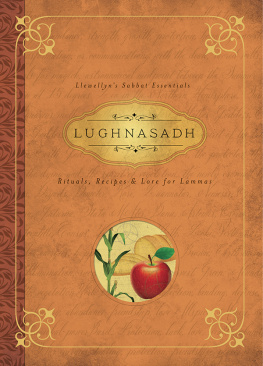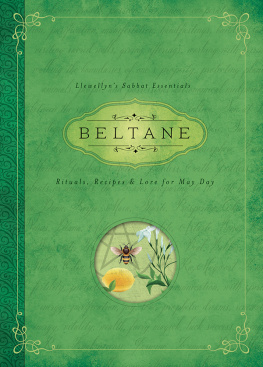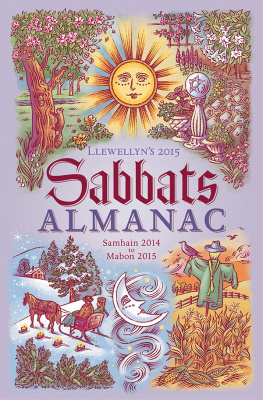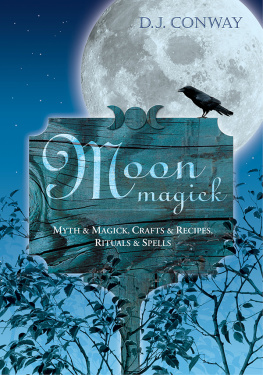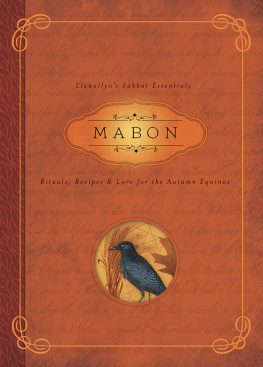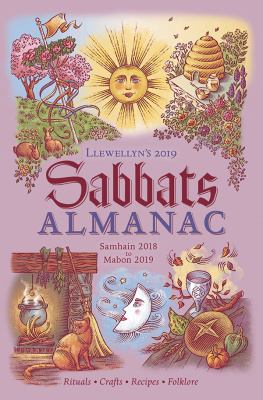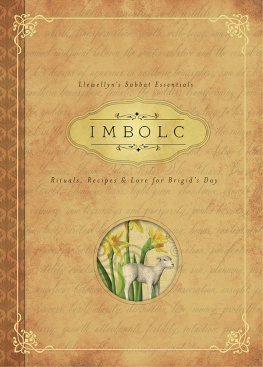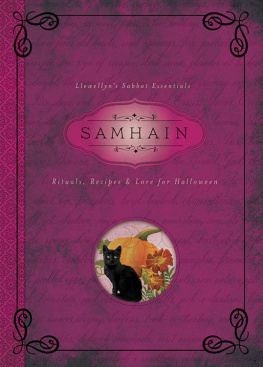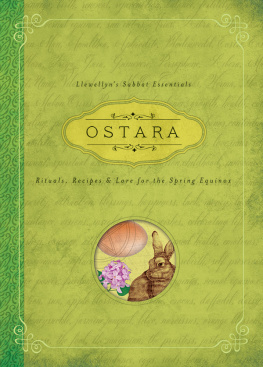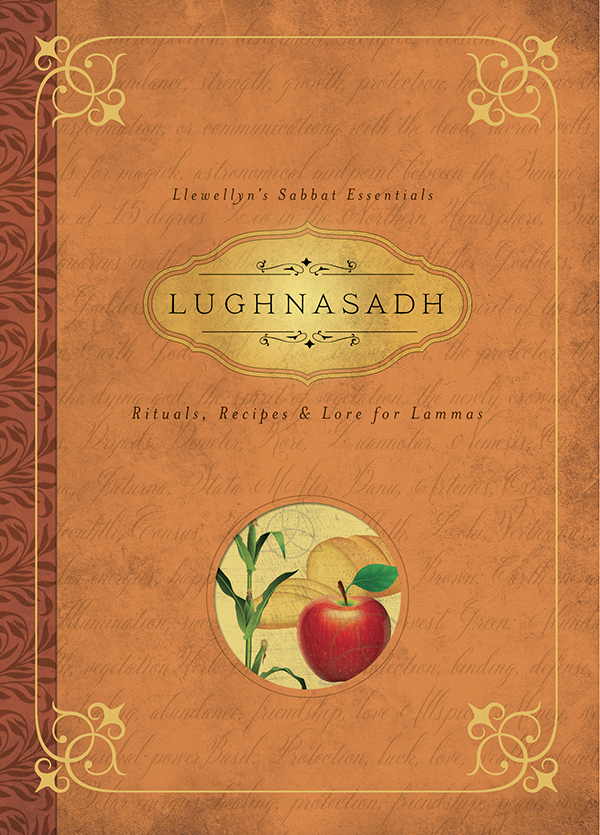Lughnasadh: Rituals, Recipes & Lore for Lammas 2015 by Melanie Marquis.
All rights reserved. No part of this book may be used or reproduced in any matter whatsoever, including Internet usage, without written permission from Llewellyn Publications, except in the form of brief quotations embodied in critical articles and reviews.
As the purchaser of this e-book, you are granted the non-exclusive, non-transferable right to access and read the text of this e-book on screen. The text may not be otherwise reproduced, transmitted, downloaded, or recorded on any other storage device in any form or by any means.
Any unauthorized usage of the text without express written permission of the publisher is a violation of the authors copyright and is illegal and punishable by law.
Cover design by Kevin R. Brown
Llewellyn Publications is an imprint of Llewellyn Worldwide Ltd.
Llewellyn Publications does not participate in, endorse, or have any authority or responsibility concerning private business arrangements between our authors and the public.
Any Internet references contained in this work are current at publication time, but the publisher cannot guarantee that a specific reference will continue or be maintained. Please refer to the publishers website for links to current author websites.
Llewellyn Worldwide Ltd.
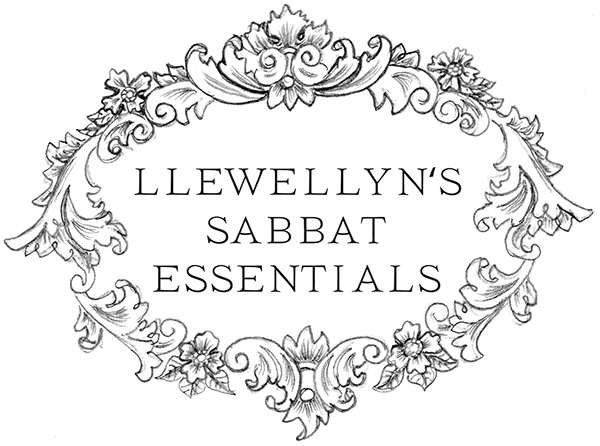
L lewellyns Sabbat Essentials provides instruction and inspiration for honoring each of the modern witchs sabbats. Packed with spells, rituals, meditations, history, lore, invocations, divination, recipes, crafts, and more, each book in this eight-volume series explores both the old and new ways of celebrating the seasonal rites that act as cornerstones in the witchs year.
There are eight sabbats, or holidays, celebrated by Wiccans and many other Neopagans (modern Pagans) today. Together, these eight sacred days make up whats known as the Wheel of the Year, or the sabbat cycle, with each sabbat corresponding to an important turning point in natures annual journey through the seasons.
Devoting our attention to the Wheel of the Year allows us to better attune ourselves to the energetic cycles of nature and listen to what each season is whispering (or shouting!) to us, rather than working against the natural tides. What better time to start new projects than as the earth reawakens after a long winter, and suddenly everything is blooming and growing and shooting up out of the ground again? And what better time to meditate and plan ahead than during the introspective slumber of winter? With Llewellyns Sabbat Essentials, youll learn how to focus on the spiritual aspects of the Wheel of the Year, how to move through it and with it in harmony, and how to celebrate your own ongoing growth and achievements. This may be your first book on Wicca, Witchcraft, or Paganism, or your newest addition to a bookcase or e-reader already crammed with magical wisdom. In either case, we hope you will find something of value here to take with you on your journey.
Take a Trip Through the Wheel of the Year
The eight sabbats each mark an important point in natures annual cycles. They are depicted as eight evenly spaced spokes on a wheel representing the year as a whole; the dates on which they fall
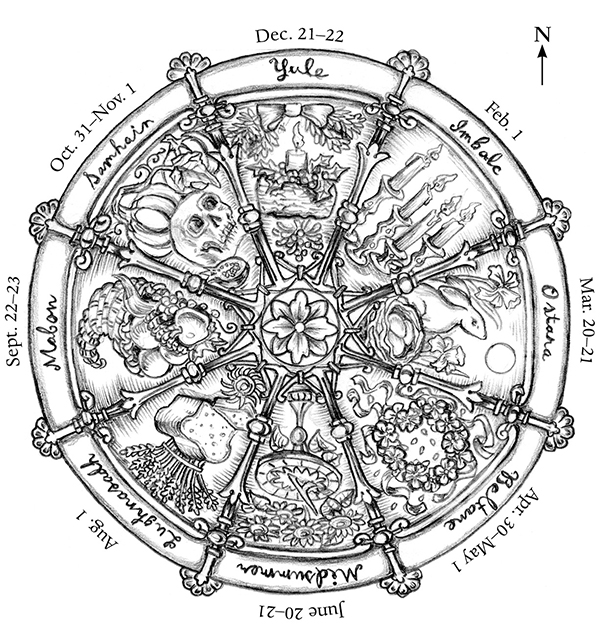
Wheel of the YearNorthern Hemisphere
(All solstice and equinox dates are approximate, and one should consult an almanac or a calendar to find the correct dates each year.)

Wheel of the YearSouthern Hemisphere
The Wheel is comprised of two groups of four holidays each. There are four solar festivals relating to the s The Wheel is comprised of two groups of four holidays each. There are four solar festivals relating to the suns position in the sky, dividing the year into quarters: the Spring Equinox, the Summer Solstice, the Fall Equinox, and the Winter Solstice, all of which are dated astronomically and thus vary slightly from year to year. Falling in between these quarter days are the cross-quarter holidays, or fire festivals: Imbolc, Beltane, Lughnasadh, and Samhain. The quarters are sometimes called the Lesser Sabbats and the cross-quarters the Greater Sabbats, although neither cycle is superior to the other. In the Southern Hemisphere, seasons are opposite those in the north, and the sabbats are consequently celebrated at different times.
While the book you are holding only focuses on Beltane, it can be helpful to know how it fits in with the cycle as a whole.
The Winter Solstice, also called Yule or Midwinter, occurs when nighttime has reached its maximum length; after the solstice, the length of the days will begin to increase. Though the cold darkness is upon us, there is a promise of brighter days to come. In Wiccan lore, this is the time when the young solar god is born. In some Neopagan traditions, this is when the Holly King is destined to lose the battle to his lighter aspect, the Oak King. Candles are lit, feasts are enjoyed, and evergreen foliage is brought in the house as a reminder that, despite the harshness of winter, light and life have endured.
At Imbolc (also spelled Imbolg), the ground is just starting to thaw, signaling that its time to start preparing the fields for the approaching sowing season. We begin to awaken from our months of introspection and start to sort out what we have learned over that time, while also taking the first steps to make plans for our future. Some Wiccans also bless candles at Imbolc, another symbolic way of coaxing along the now perceptibly stronger light.
On the Spring Equinox, also known as Ostara, night and day are again equal in length, and following this, the days will grow longer than the nights. The Spring Equinox is a time of renewal, a time to plant seeds as the earth once again comes to life. We decorate eggs as a symbol of hope, life, and fertility, and we perform rituals to energize ourselves so that we can find the power and passion to live and grow.
In agricultural societies, Beltane marked the start of the summer season. Livestock were led out to graze in abundant pastures and trees burst into beautiful and fragrant blossom. Rituals were performed to protect crops, livestock, and people. Fires were lit and offerings were made in the hopes of gaining divine protection. In Wiccan mythos, the young goddess is impregnated by the young god. We all have something we want to harvest by the end of the yearplans we are determined to realizeand Beltane is a great time to enthusiastically get that process in full swing.

